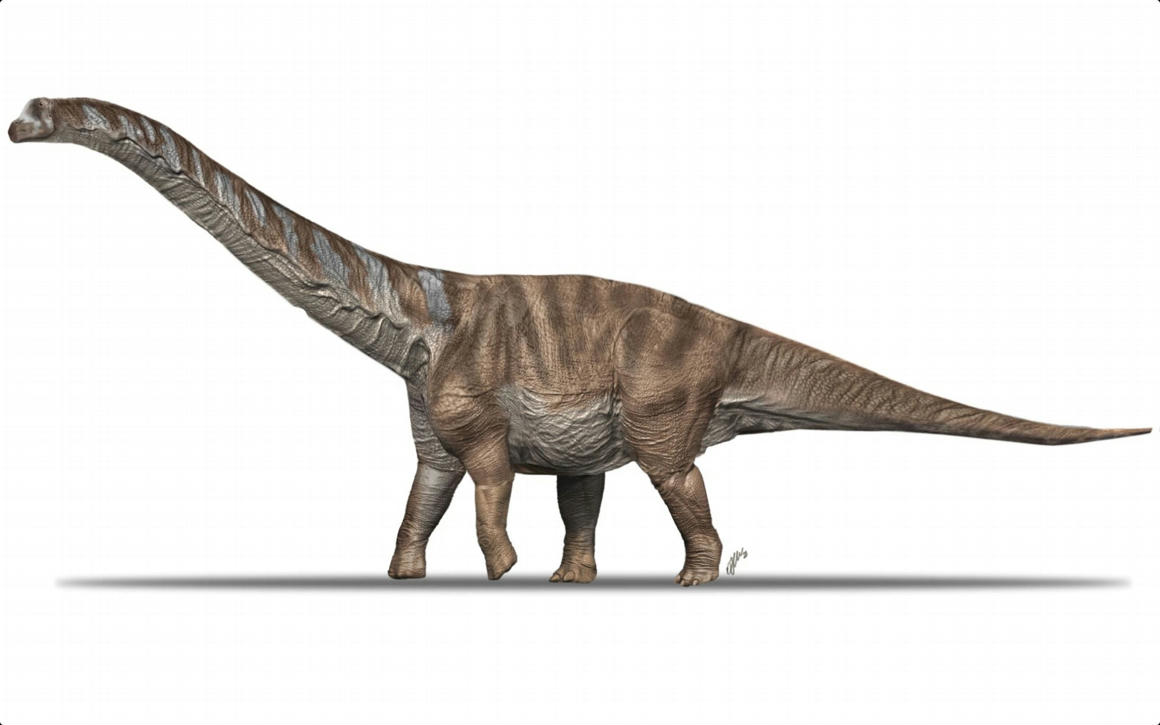In the last millions of years of the Cretaceous period, the European archipelago was inhabited by huge jungle-like herbivores, roughly the size of a car, as in Transylvania in 1915. Discover Magyarosaurus dacus.
They are assembled in for titanosaurs The most complete and largest herbivorous dinosaur ever found on our continent, Epitosaurus kohni. This discovery, which has been hidden from science for 60 years since its discovery in 1954, finally provides an answer as to why European titanosaurs were so different during this period.
Fossil on February 7 in Nature Ecology and Evolution I mentioned the examination according to epitosaurus Its ancestors came to Europe from Africa on migration routes open at sea level. The arrival of new titanosaurs, the researchers say, brought gradual changes to the European ecosystem, with larger titanosaurs beginning to adapt to the archipelago’s presence and thus replacing smaller dinosaurs.
It spread all over the land in late Crete and was considered the largest land animal ever. titanosaur They constituted the most important group of sauropods, and thrived until the Great Extinction 66 million years ago. In the last millions of years of the Cretaceous, the Earth’s continents were already beginning to resemble their present form, but the archipelago still existed in Europe, and the formation of the Alps was just beginning.
Described by Bernat Vela, a paleontologist at the Autonomous University of Barcelona, and colleagues, it was approximately 17.5 meters long and weighed 14,000 kilograms. epitosaurus 70.5 million years ago, it lived in a large area called the Ibero-Armorican island, located in the southwestern part of present-day Spain, Portugal and France. Some dinosaur remains, including femur and humerus, were discovered by Walter George Kuhn in 1954, in a 70.5-million-year-old formation in Maastricht during the Cretaceous period, just a few kilometers from the Catalan village of Tremp. Between 2012 and 2014, Villa and colleagues found 12 cervical vertebrae, 6 ribs, and other bones in the same area a few meters long where Cohn made his excavations.
According to the researchers, all the remains belong to an individual characterized by 14 titanosaurs, but also to those that make the animal distinguished among titanosaurs – such as the shape of the cervical vertebrae – all of which allow the description of a new species. To determine the evolutionary relationship of the dinosaur, researchers conducted a genetics study based on the anatomical characteristics of the animal. revealed that she is epitosaurus Its closest known relative is the one that was discovered in Egypt, reaching a length of nearly 27 meters ParalititanAnd, beyond that, there are other African and South American titanosaurs that formed on the former supercontinent of Gondwana nearly 100 million years ago.
The researchers are 17.5 meters tall, the space is large epitosaurus No sign of bone was found in isolated shrinkage A phenomenon that was characteristic of that found by Ferenc Knopexa Magyarosaurus And many other dinosaurs that were smaller than their relatives on other continents in the European archipelago. This phenomenon may be caused by selection pressures on the evolution of animals on rare islands for millions of years. The epitosaurus The difference from other European titanosaurs and the results of genetics study clearly indicate that the ancestors of dinosaurs migrated to North Africa from Europe.
Migration may have occurred 70.6 million years ago, when it was ancient Tethys ocean In the western part of the nineteenth century, it was low for some time, excavating underwater formations of carbonate rocks from which titanosaurs could migrate from Africa to Europe. The epitosaurus The researchers said it was probably representative of a modified titanosaur, which formed from larger animals and showed fewer and fewer isolated signs of shrinkage in herbivorous sauropods. This trend, according to them, in other parts of the European archipelago, such as Magyarosaurus former Haji Island It may have affected its current habitat.
Related articles on Qubit:











































